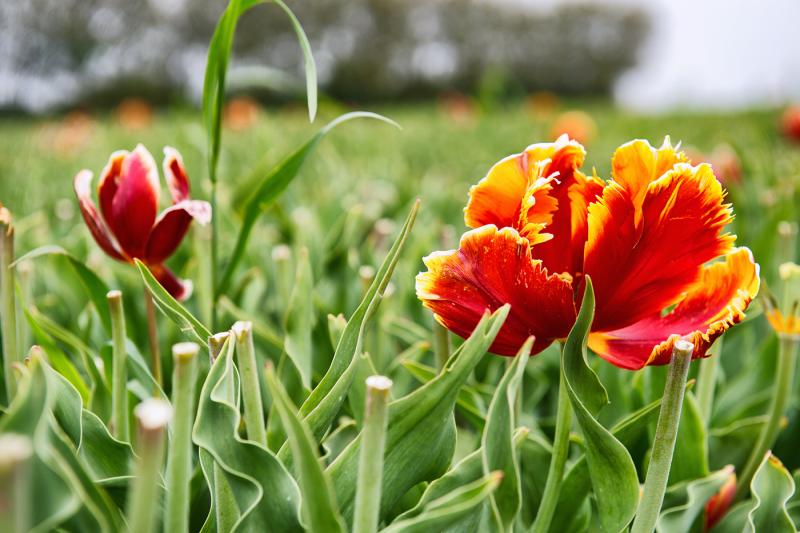Plant parrot tulips for a flock of colorful blooms
Parrots eat with their feet and taste with the tops of their beaks. Parrots are the only birds able to hold food up to their beak while eating. Most of all, parrots are beautiful, with multicolored feathers in bright colors.
The parrot tulip is a stunning garden flower with its curled, twisted and even ruffled petals featuring splashy color combinations. They really do look like the feathers of the tropical bird they are named for.
Parrot tulips are relatively new to the flower world, descending from mutations seen in 17th-century France and the Netherlands. Parrot tulips are great cut flowers with blooms 5 inches across on 15-20-inch stems.
Some of the more popular parrot tulips include Flaming Parrot, featuring brilliant-yellow petals streaked with bright red flames and showing fringed edges. Estella Rijnveld parrot tulip is a creamy-white blossom adorned with raspberry-red streaks and ruffled edges. The Blue Parrot has light lavender-blue petals with lacy fringes. Apricot Parrot has a soft apricot color with subtle shades of green and delicate fringing.
The eye-catching Rococo Parrot has dark-red petals with deep-purple flames and dramatic, heavily ruffled edges.
For best flowering, plant parrot tulip bulbs in full sunlight in fertile, well-drained soil at least 6 to 8 weeks before your ground freezes. Choose a spot protected from strong winds, because the long-stemmed parrot tulip flowers are a bit fragile.
Although tulips are technically perennials, the centuries of hybridizing means that their ability to return year after year has weakened. Parrot birds can live up to 60 years, but parrot tulips usually fade after just a season or two, so you may want to plant more every year. Many gardeners treat them as annuals, planting new bulbs every fall. Our North American climate and soil can’t match the tulip's native growing conditions in the Anatolian and southern Russian soil and climate.
Plant parrot tulip bulbs when the average nighttime temperatures drop into the 40s. Place them fairly deep, at least 8 inches down, or about three times the height of the bulb. Plant the bulb in the hole with the pointy end up. Cover with soil and press down firmly to avoid air pockets. Add a balanced bulb fertilizer when you plant them.
Because parrot tulips, like all bulbs, have their own complete storage system, they already contain all of the nutrients they need for next year, so the fertilizer will help future growth. Try adding compost or a balanced time-release fertilizer meant specifically for bulbs. The ideal soil pH is 6-7. They are hardy in USDA zones 4-7.
You probably won't need to deliberately water your parrot tulips unless there is a drought. Soggy soil leads to fungus and disease, and can rot tulip bulbs.
Plant parrot tulips this fall, and in the spring, you will have a flock of playful blossoms.






















































